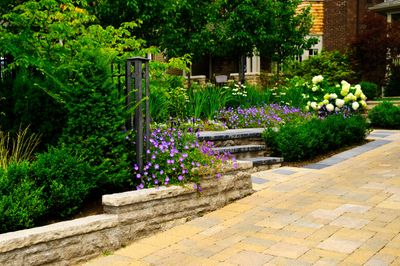Tips for Landscaping around Driveways
Driveway landscaping is different from other landscaping for a few key reasons, and as long as you bear those in mind, you should be fine. The first key thing to consider is visibility. Tall plants are all well and good in other parts of the yard, but bordering a driveway, especially where it meets the road, can create a real headache. When planning, make sure to pay attention to plants’ mature height – what may seem inconspicuous as a seedling could grow into a monster later. While you want to choose plants that grow low to the ground, groundcovers might not be the best choice. Plants that spread are not going to spread only in the direction that you want them to, and if you add creeping plants, you’re signing yourself up for years of chopping them back from the asphalt. Choose plants that stay where you put them, or that spread very slowly. The final major consideration is water runoff. Every rainfall is going to mean lots of water looking for a place to absorb into the ground, and especially if you have a paved driveway, the first place it’s going to find is where your driveway plants live. Opt for plants that can handle the extra irrigation and that have strong enough root systems they won’t be washed away.
What are the Best Driveway Plants?
Now that you know to look for low, non-spreading plants that can take running water, what are some good examples? The best plants for driveways depend somewhat upon which zone and type of climate you live in, but here are some good choices:
Low growing annuals, such as dahlias, zinnia, geraniums, and marigolds
Flowering herbs such as sage, rosemary, and lavender
Short shrubs like Korean boxwood and lavender cotton
Most ornamental grasses
